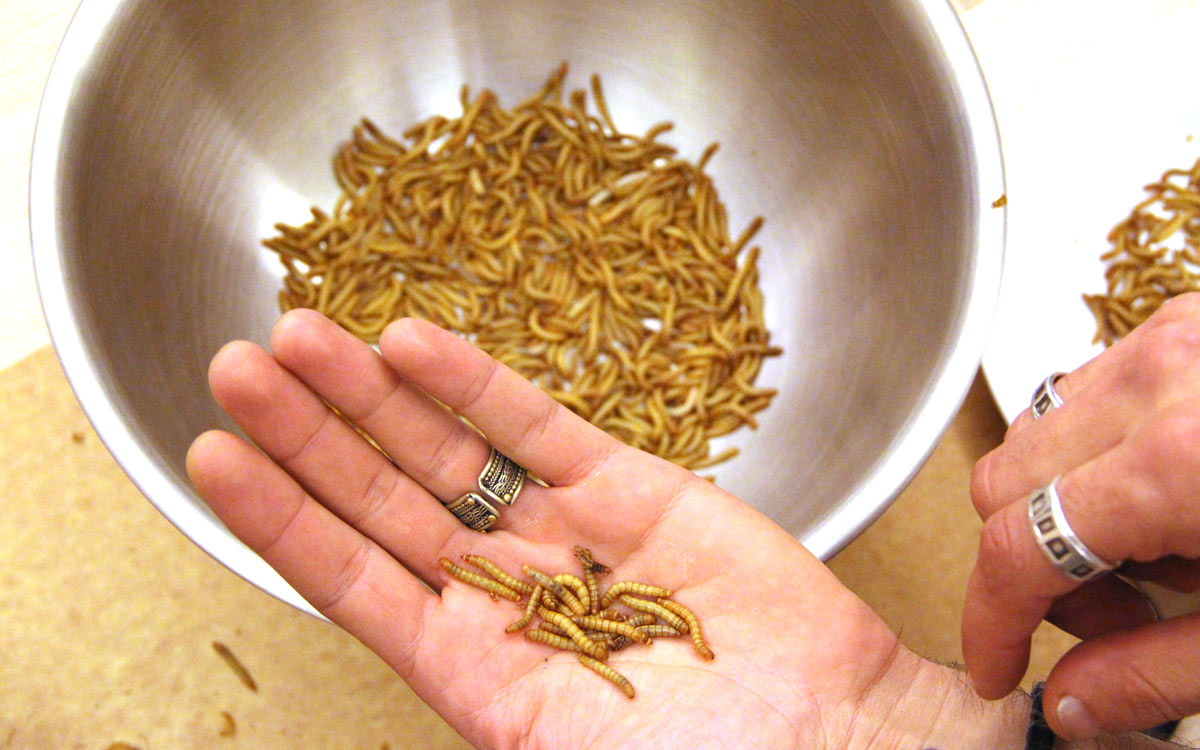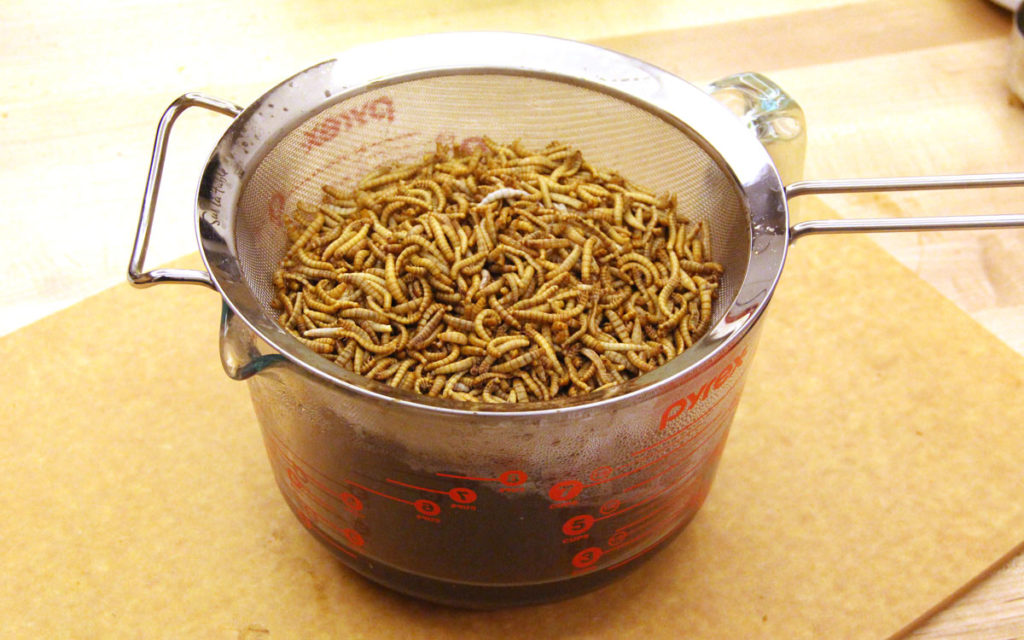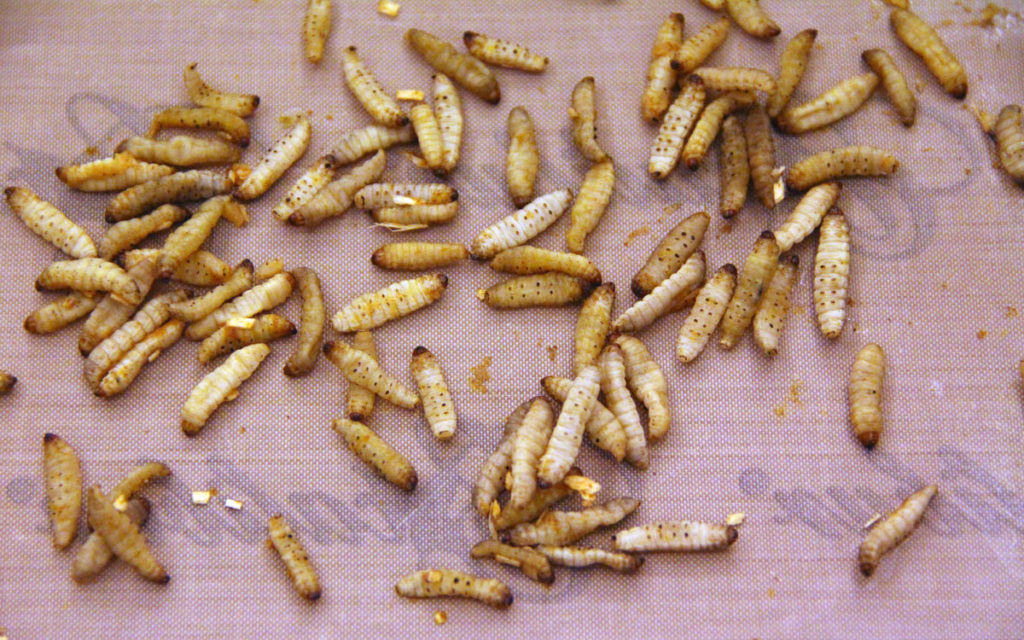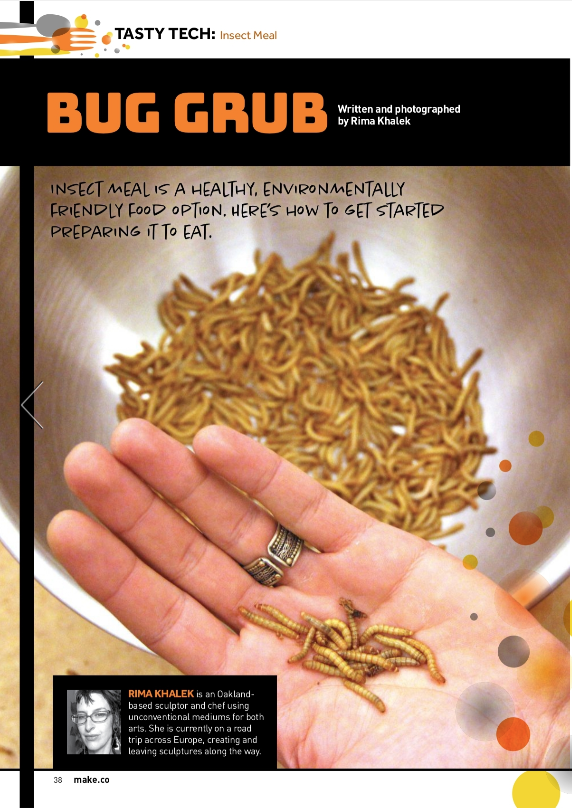
Many people around the world eat insects without batting a lash, gagging, or thinking of childhood dares. They eat insects as snacks or main dishes as an abundant source of protein, healthy fats and minerals. Raising and harvesting insects for human consumption requires considerably fewer resources than livestock does, and releases much less greenhouse gases.
There are more than 1,900 edible insects on Earth. In this article we will focus on three easily accessible ones: crickets, mealworms, and waxworms. We’ll use a technique to get them cleaned and cooked that works well with many other insects too. How you prepare them after is completely up to your creative self.
Basic Starting Point
With live insects, it is best to put them in the refrigerator for at least an hour or until you are ready to use them. This will immobilize them by slowing their metabolism, which helps in the collecting and cleaning process. If you prefer, you can place them in the freezer for an hour, which will kill them, and then you can proceed without fear of reanimation.
Crickets

Place the crickets (Figure A) in the freezer for an hour to eliminate the chance of any escape artists. Then pick them out of their container, being sure to leave any squished ones behind, and clean them by rinsing under cool water.
Mealworms
Mealworms are the larvae from the mealworm beetle. They have a very earthy flavor. They generally come in a bag with newspaper in it for them to crawl around in.

First, empty the mealworms into a deep bowl, something they can’t crawl up and out of, and remove them from the newspaper (Figure B).

Next, clean them up. I like to do this while they are still alive and a little slow from the fridge. You will find that there will be plenty of shed skin and a few dead worms, which are easy to find because they are generally darker in color (Figure C).
A trick that I found that is a huge help is blowing. Go outside where you can make a bit of a mess, put a handful in a shallow bowl and blow. You will blow all their shed skin away. After all the dead and shed skin are separated, give them a nice rinse and stick them in the fridge or freezer for an hour.
Waxworms

Waxworms (Figure D) are the caterpillar larvae of the wax moth. They have a very neutral flavor and take on what you cook them with.


Waxworks are pretty easy to clean. If they arrive in sawdust, take a large strainer and sift (Figure E). Some may squeeze through but it is a pretty painless process of cleaning. Pick out any black dead ones or ones that look like they are on their way out (Figure F). Give them a nice rinse and put them back in the fridge for an hour.












